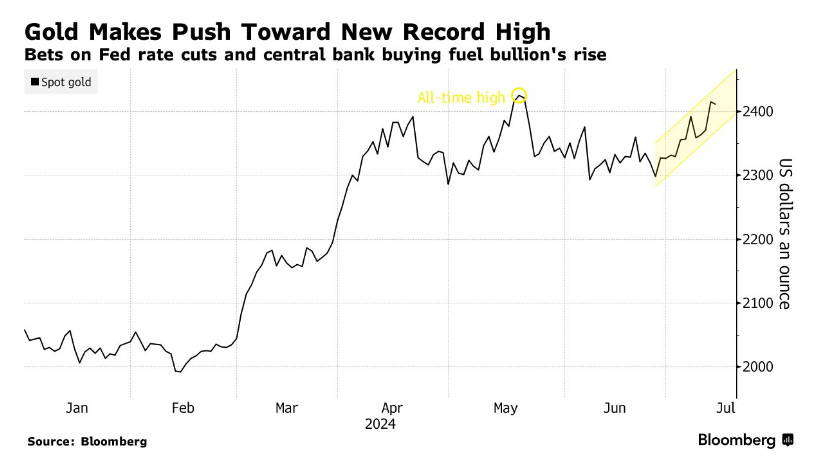Gold stocks versus gold bullion?
It isn't clear which is the best bet, if either
Gold is again approaching a record high price, up about 20% this year.
Barrick Gold (ABX.TO) closed today at about CDN$25 verus about CDN$24 in early January. Despite producing about 4 million ounces of gold a year, the US$400 dollar per ounce rise in gold prices has yet to translate into a meaningful rise in Barrick profits, which were disappointing in the first quarter at a mere $0.17 per share. Costs rose along with realized prices.
Agnico Eagle (AEM.TO) did much better, with the stock rising from CDN$65 in January to over CDN$100 lately.
One issue with miners is that they are going out of business from the date their mines go into production, and are exposed to general inflation in addition to energy cost increases when the price of diesel fuel, natural gas and electricity rise even if general inflation rates are not running away.
So the question of how to play a bullish thesis on gold is a conundrum for many investors. In my opinion, the streaming companies like Wheaton Precious Metals (WPM.TO) are the best bet. They are insulated from cost inflation since their revenue is tied to net smelter revenue (typically, but not always) and Wheaton has risen from CDN$64 in January to CDN$84 more recently and exhibits a lot less volatility than the miners. Franco-Nevada (FNV.TO) has a somewhat similar profile. The miners can have much more dramatic price moves in both directions but the streaming companies are “steady eddies” that tend to produce good results over time.
Franco Nevada traded at CDN$19 a share in 2008 and is over CDN$170 today, an average annual return of about 27%. Wheaton Precious Metals average annual return over the same period was just north of 20%.
One hidden benefit of the streaming companies with royalty holdings on large mines is that the resources of deposit being mined are typically underestimated at the time of the streaming contract’s negotiation, and expanded reserves increase the stream of royalty payments, sometimes for many years.
I am not a gold bug - I don’t think it is much of an “inflation hedge” since mining costs keep rising as grades deplete and the costs of mining gold simply rise as time passes. Today’s near record US$2,400 gold price looks impressive as a headline number but the inflation-adjusted price of gold hasn’t really changed much in the past decade.
Inflation Adjusted Price of Gold (in US$ per ounce)
If you are bullish on gold and want to bet on higher prices, owning gold bullion directly (it has storage costs and opportunity costs since your money is tied up but gold pays no interest or dividends) rarely outpaces ordinary equities, and gold miners. The average annual return on gold miners since 1971 has lagged other commodities and the stock market in general, which isn’t much of a case for miners. But the returns enjoyed by investors in the gold streaming companies have been quite good.
So for my money, Franco Nevada and Wheaton are better bets than miners.





